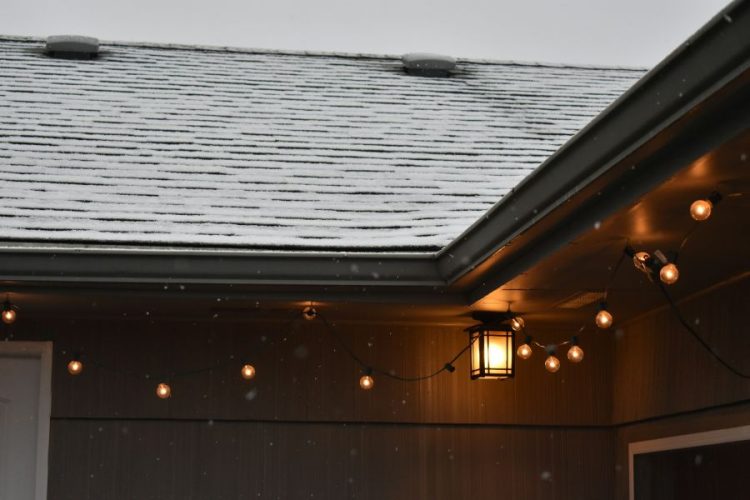Roofing Rules: 6 Easy Tricks for a Leak-Free Home

Categories :
Maintaining a sturdy and leak-free roof is paramount to ensuring the safety and longevity of your home. It acts as the first line of defense against harsh weather conditions and plays a crucial role in the overall structural integrity of your dwelling. Whether you're dealing with the aftermath of a storm, regular wear and tear, or planning ahead to avoid future problems, understanding the basics of roofing maintenance can save you from costly repairs down the line. In this guide, "Roofing Rules: 6 Easy Tricks for a Leak-Free Home," we'll walk you through simple yet effective strategies to keep your roof in top condition, ensuring a secure and dry home for you and your family.
1. Hire Professional Roof Inspectors
Hiring professional roof inspectors can be a game-changer in maintaining a leak-free home. Natural threats such as heavy rain, snow accumulation, and strong winds can severely damage your roof, making it crucial to consult experts like Kitsap Roof Pros for timely inspections and maintenance. These experts come equipped with the knowledge, skills, and tools necessary to identify issues that are not immediately apparent to the untrained eye. Regular inspections by professionals can catch small problems before they escalate into larger, more expensive repairs. They can also provide valuable advice on the state of your roof, expected lifespan of materials, and when it might be time for repairs or replacement. Investing in professional inspections at least once a year can save you a significant amount of time, money, and stress in the long run.
2. Keep Your Gutters Clean
One of the simplest yet most effective ways to prevent roofing issues is by keeping your gutters clean. Clogged gutters can lead to water overflow, which may result in water damage to your roof, siding, and foundation. Accumulating debris, such as leaves, twigs, and other materials, especially after the fall season or during periods of heavy rain, can obstruct the proper flow of water. It's crucial to routinely remove this debris to allow water to flow freely away from your roof and home. This practice not only minimizes the risk of leaks and water damage but also contributes to the overall upkeep of your house's exterior. Regularly cleaned gutters are an easy yet effective way to protect your home's structural integrity.
3. Trim Overhanging Branches
Trees can add beauty and shade to your property, but overhanging branches pose a risk to your roof. They can scratch and gouge roofing materials when the wind blows, leading to significant damage over time. In extreme cases, heavy branches could fall on your roof, causing immediate and severe damage. Regularly trimming back any branches that hang over your roof can prevent these issues, keeping your roof safe from physical harm and ensuring its longevity. It’s not just about removing the immediate threat; regular trimming also discourages animals from accessing your roof, which can lead to other forms of damage. This preventative measure helps maintain the aesthetic and structural integrity of your roofing system.
4. Ensure Proper Attic Ventilation and Insulation
Proper attic ventilation and insulation play a crucial role in the health of your roof. Poor ventilation can lead to a buildup of heat and moisture in your attic, which can cause your roofing materials to deteriorate prematurely. It can also lead to issues like ice dams in the winter, which can damage your roof as well as the interior of your home. Ensuring your attic is well-ventilated and properly insulated can prevent these issues by maintaining a more consistent temperature and reducing moisture levels. A well-ventilated attic helps in prolonging the lifespan of your roof by preventing the buildup of heat which can warp or damage roofing materials over time. Additionally, proper insulation helps in maintaining an energy-efficient home, making this step valuable not only for your roof but for your overall home maintenance.
5. Regularly Seal and Inspect Roof Flashings
Roof flashings, the materials used to seal transitions on your roof where leaks are prone to occur, such as around chimneys, vents, and skylights, must be regularly inspected and maintained. Over time, flashing can become loose, corroded, or cracked, allowing water to enter your home. It's also advisable to check for any debris or blockages that could prevent proper drainage. By regularly sealing and inspecting these areas, you can catch and repair any issues before they lead to major problems. This preventative measure can significantly extend the life of your roof and prevent unexpected leaks. Regularly attending to your roof flashings can also give you peace of mind during heavy storms, knowing that your home is well-protected against potential water damage.
6. Don't Neglect Minor Repairs
One of the biggest mistakes homeowners make is neglecting minor roof repairs, failing to realize that small issues like missing shingles or minor leaks can quickly escalate into more significant problems if not addressed promptly. This neglect not only increases the risk of more extensive damage to your home but can also lead to expensive repair bills down the line. Proactively dealing with these issues at their onset is crucial. Taking immediate action at the first sign of any roofing issue can save you time, money, and stress, ensuring your roof remains in optimal condition. Regular maintenance and addressing minor repairs promptly not only helps in maintaining the aesthetic appeal of your home but also contributes to the overall structural integrity, preventing potential hazards and ensuring the safety of your living space.









